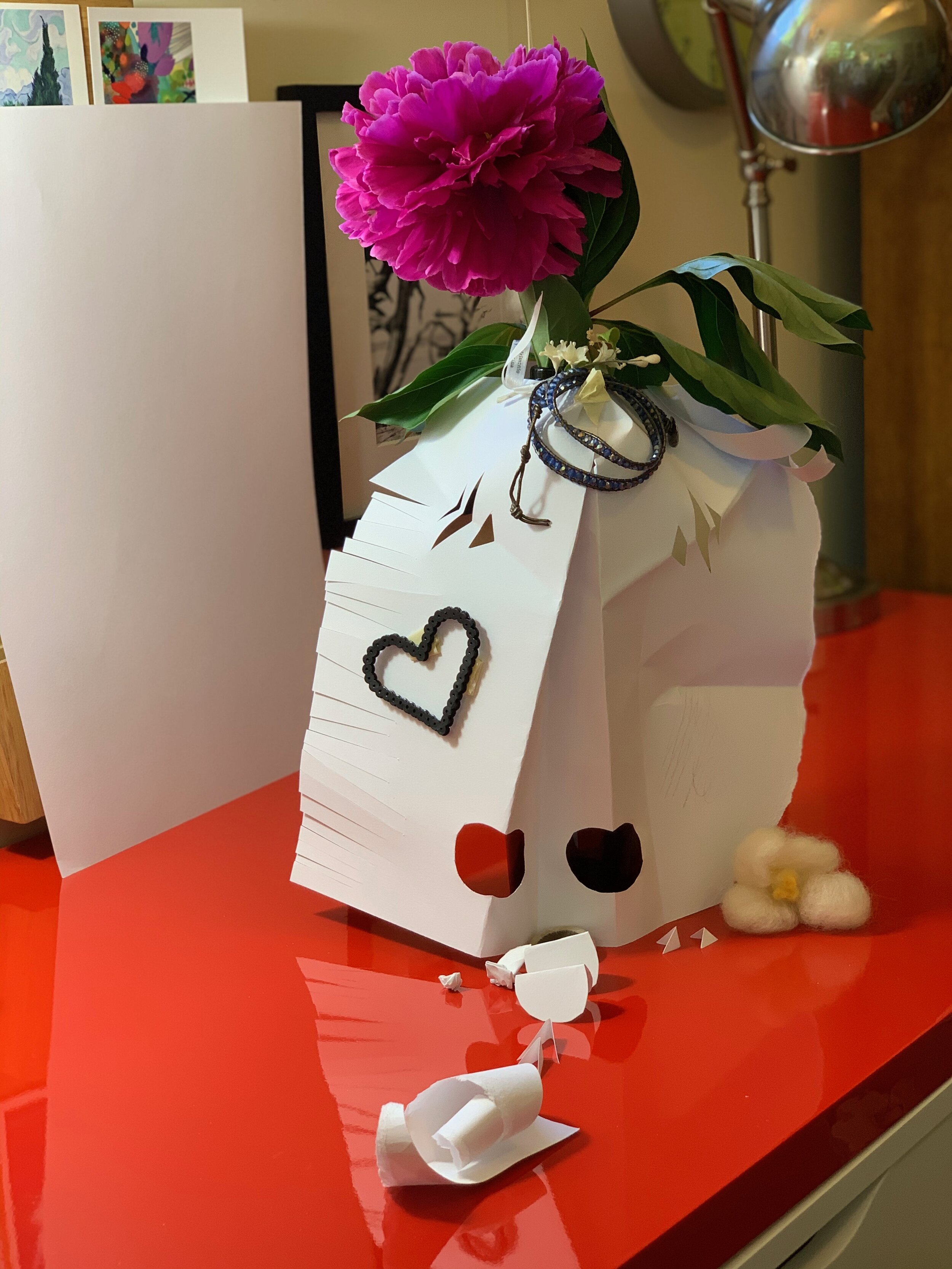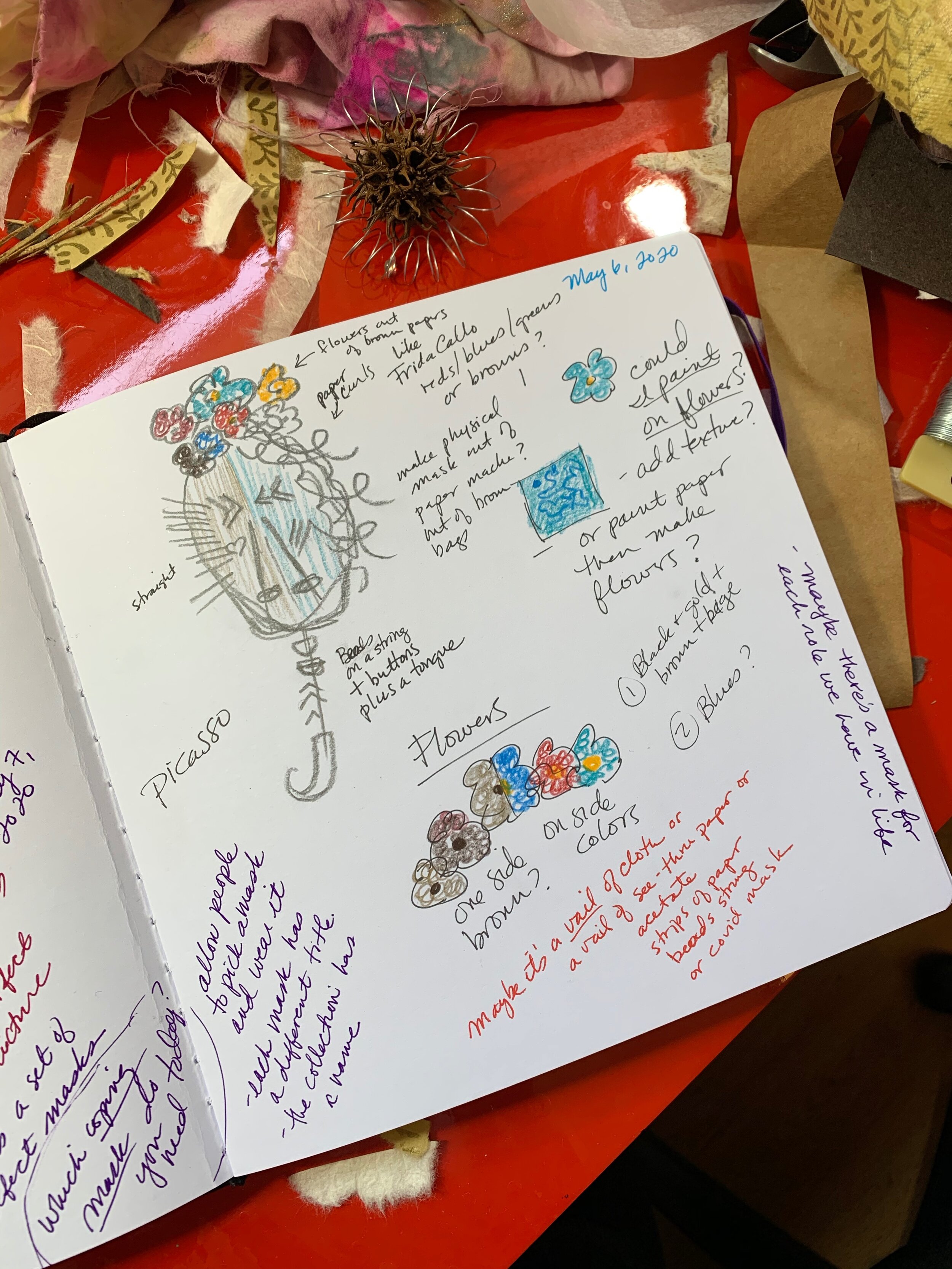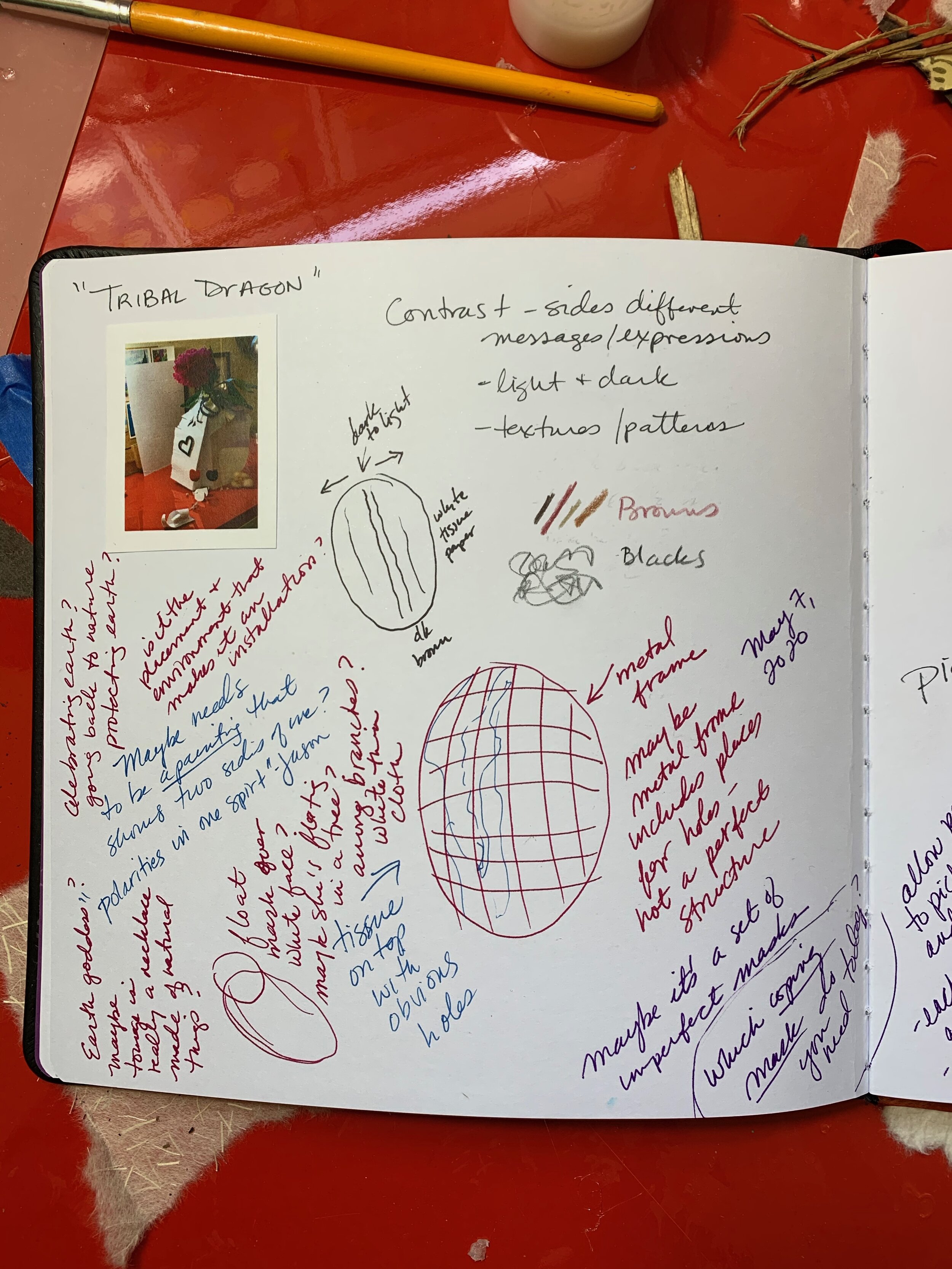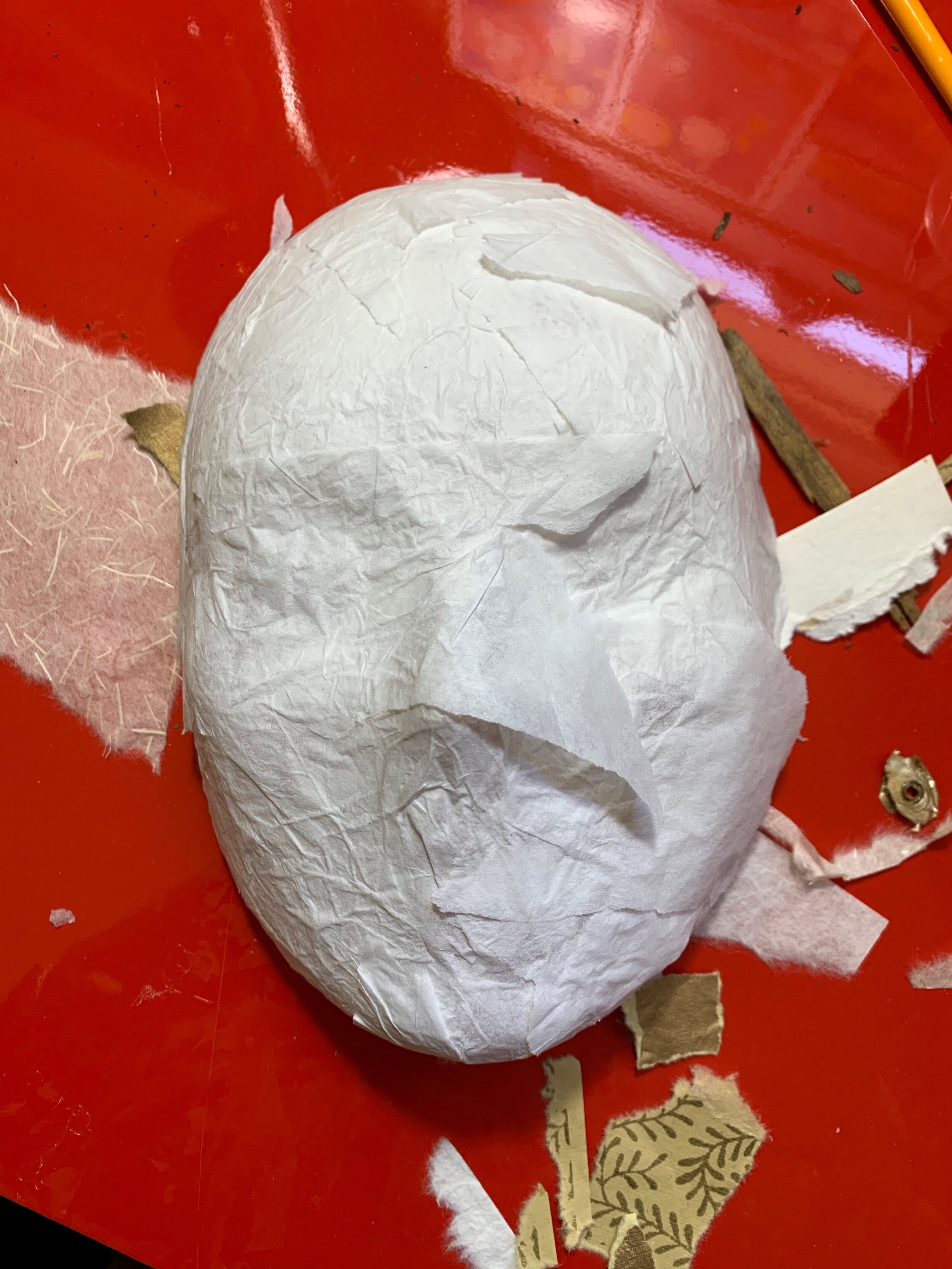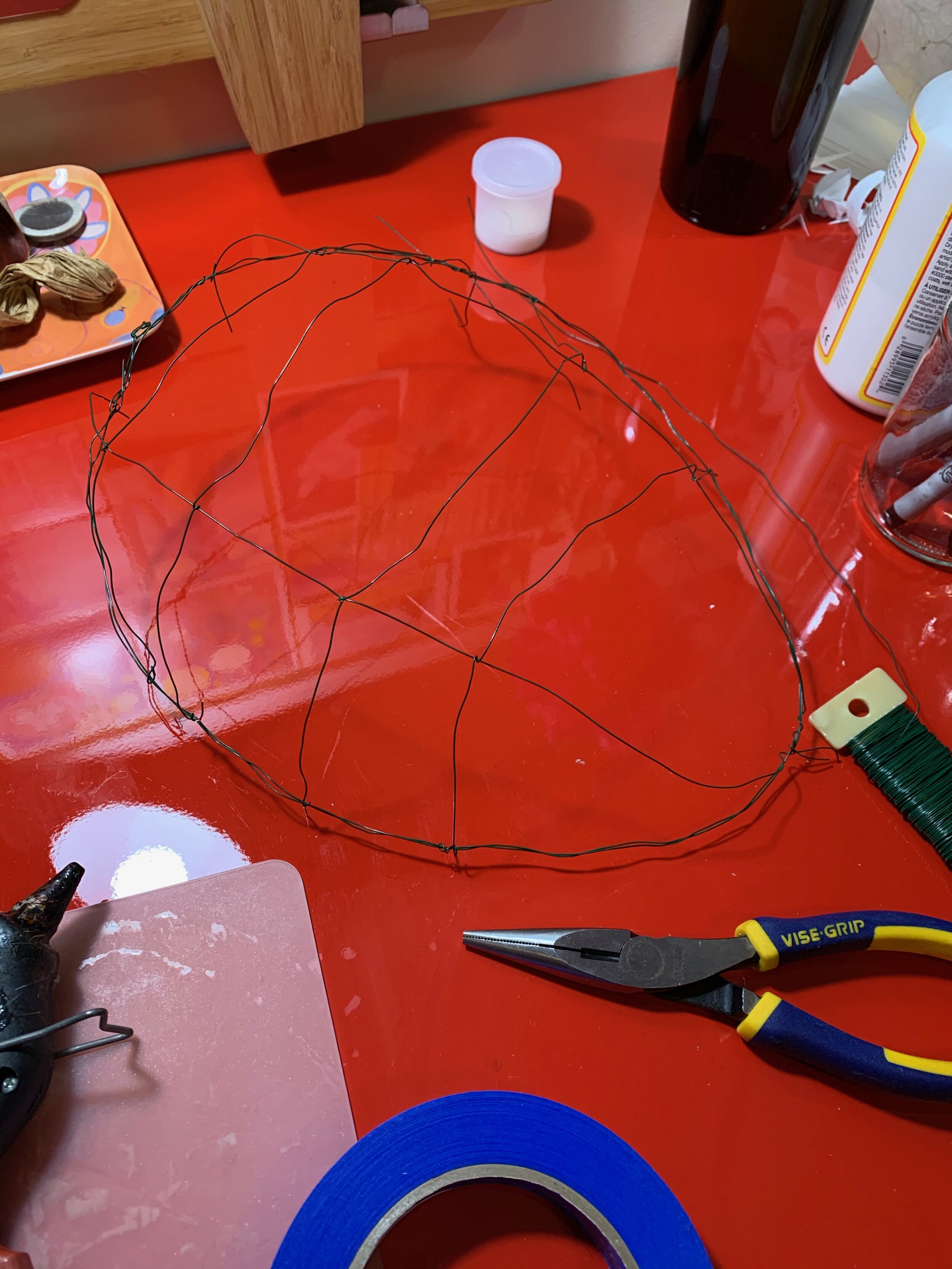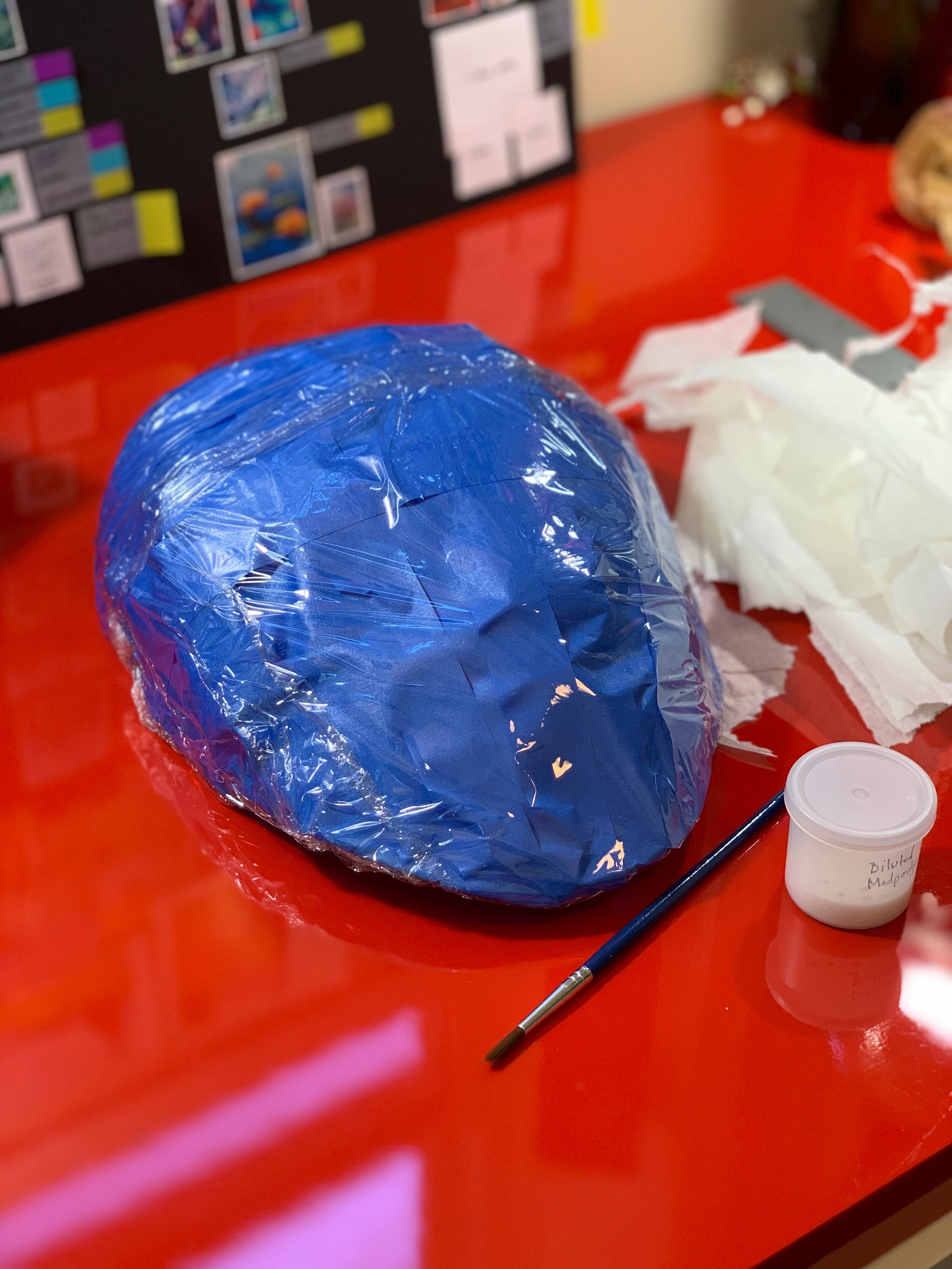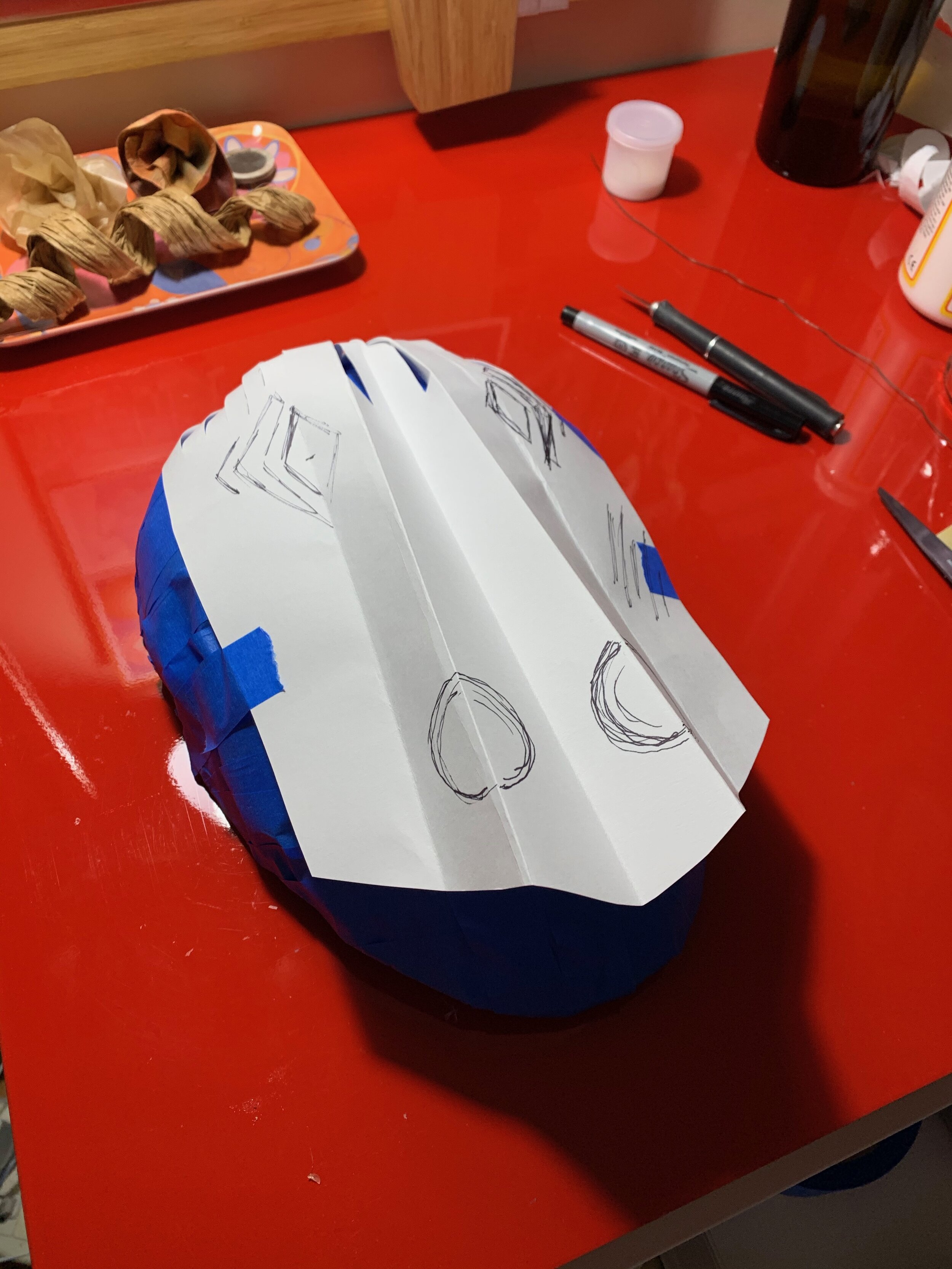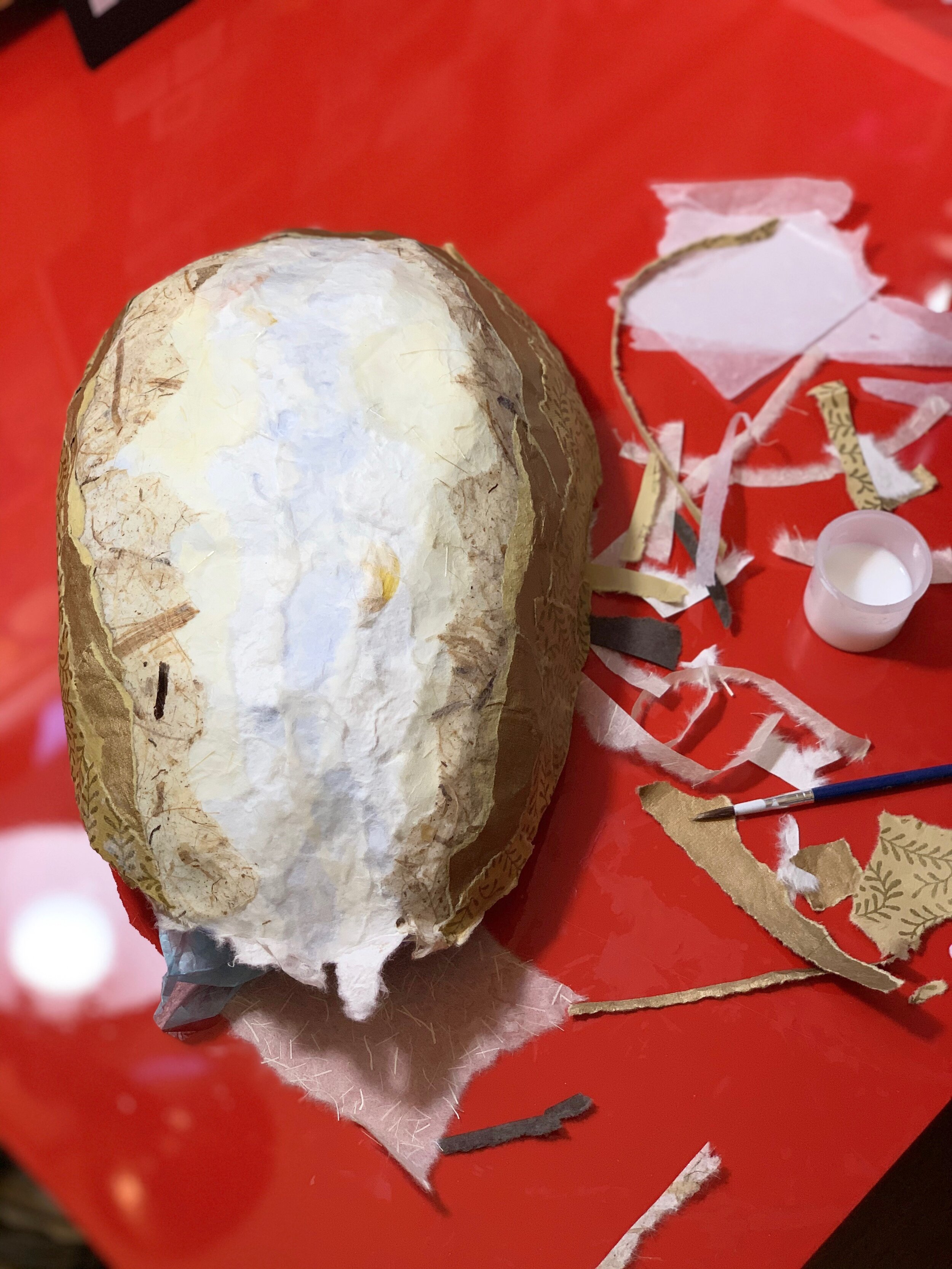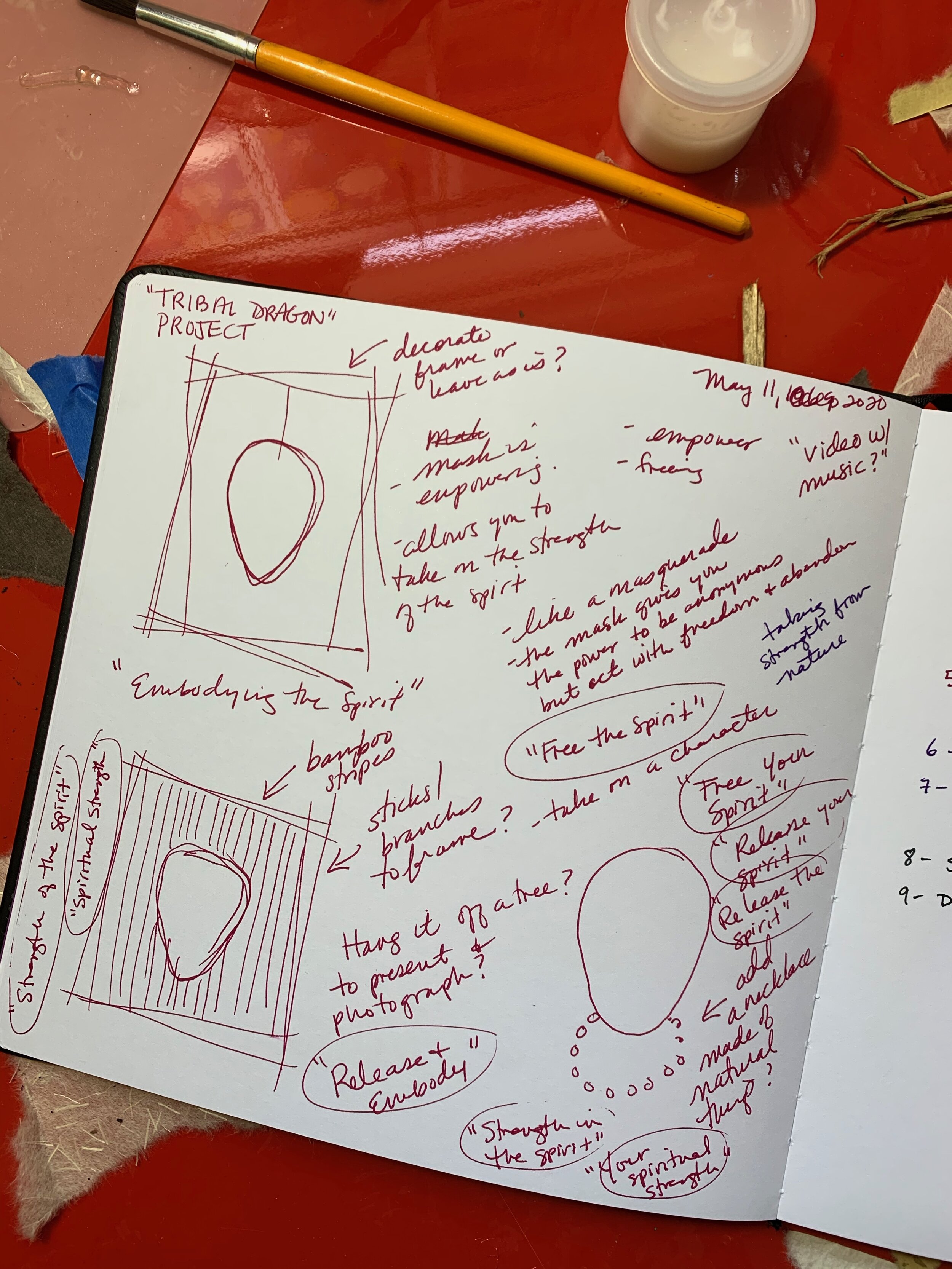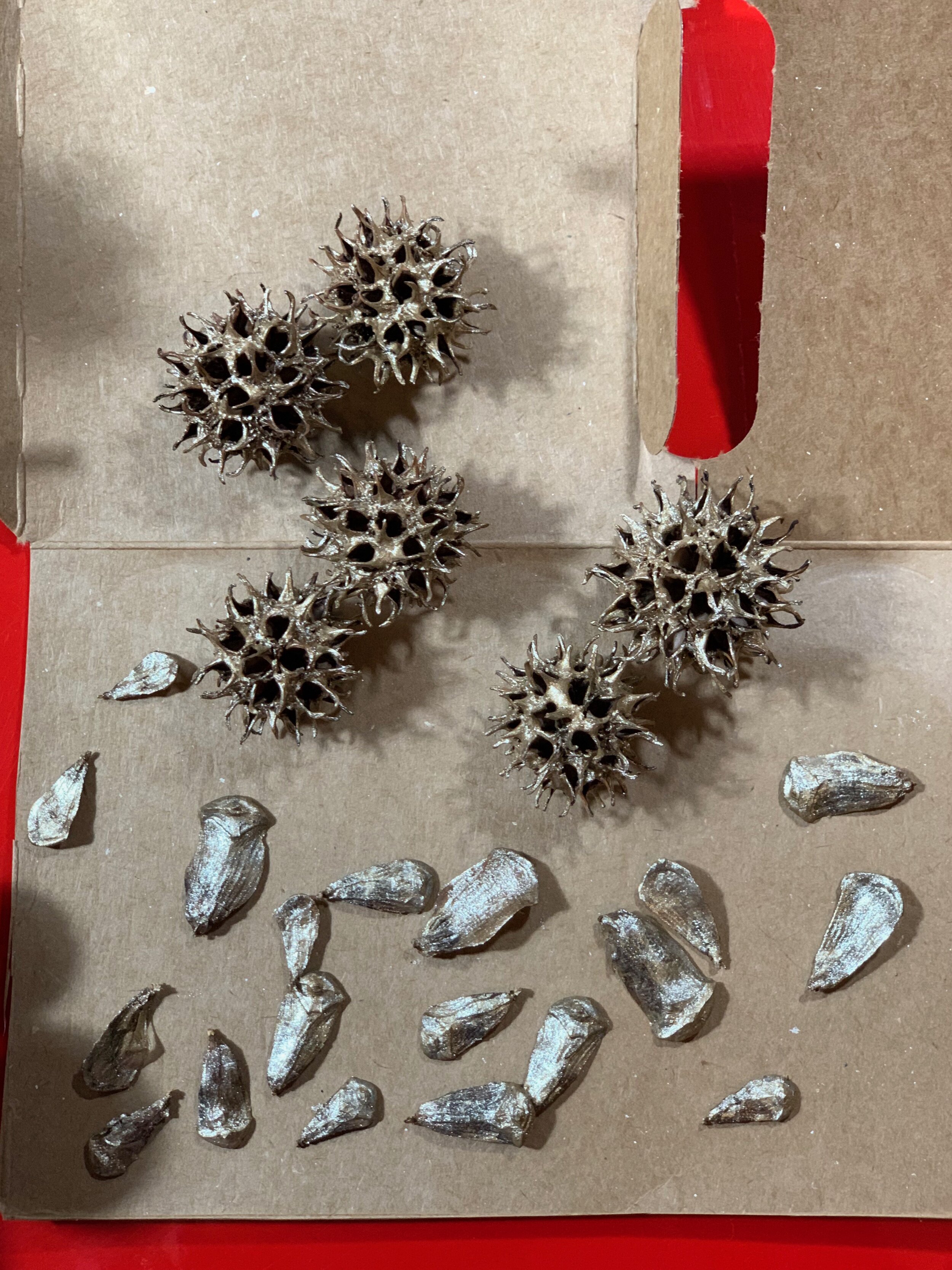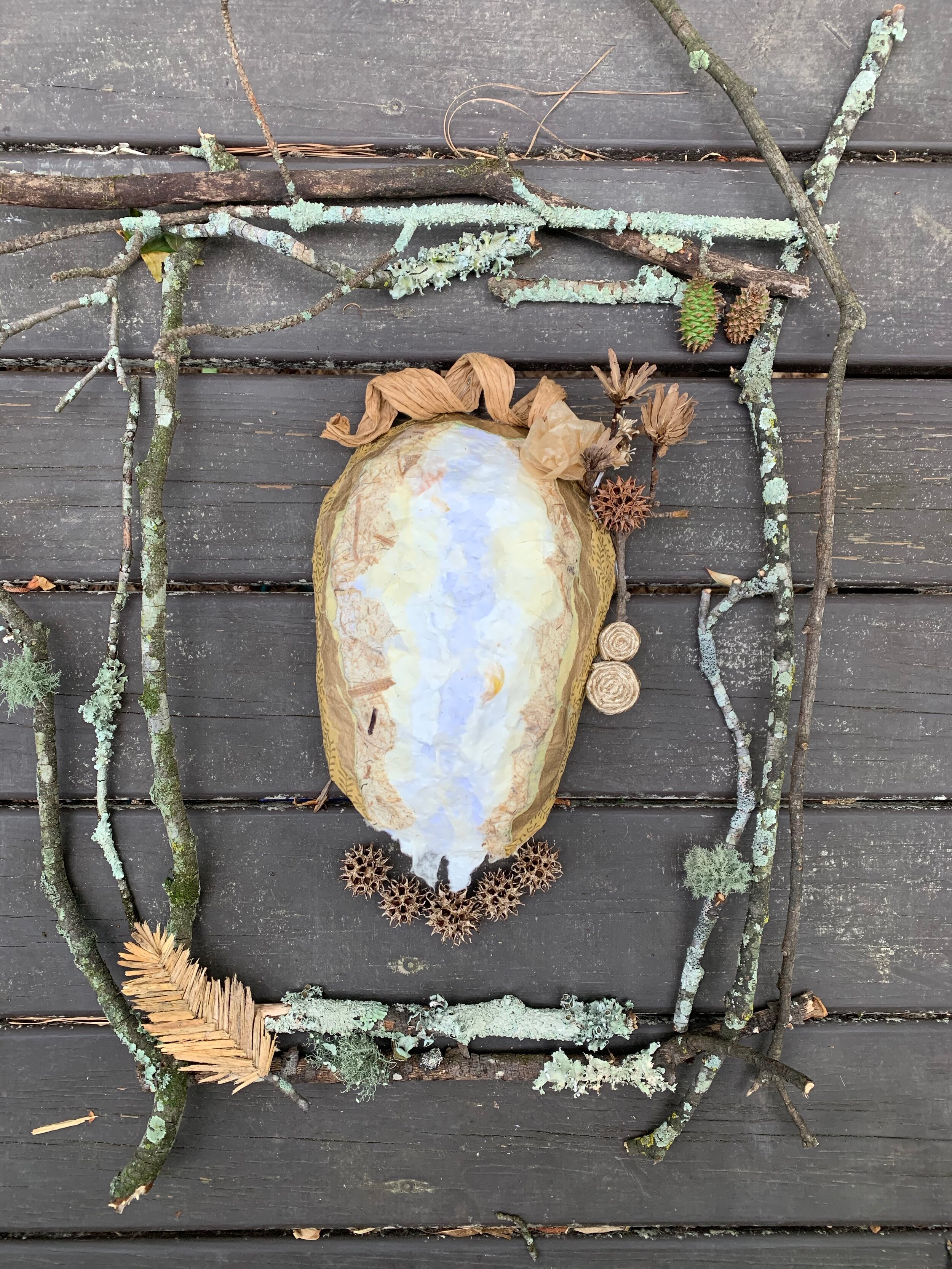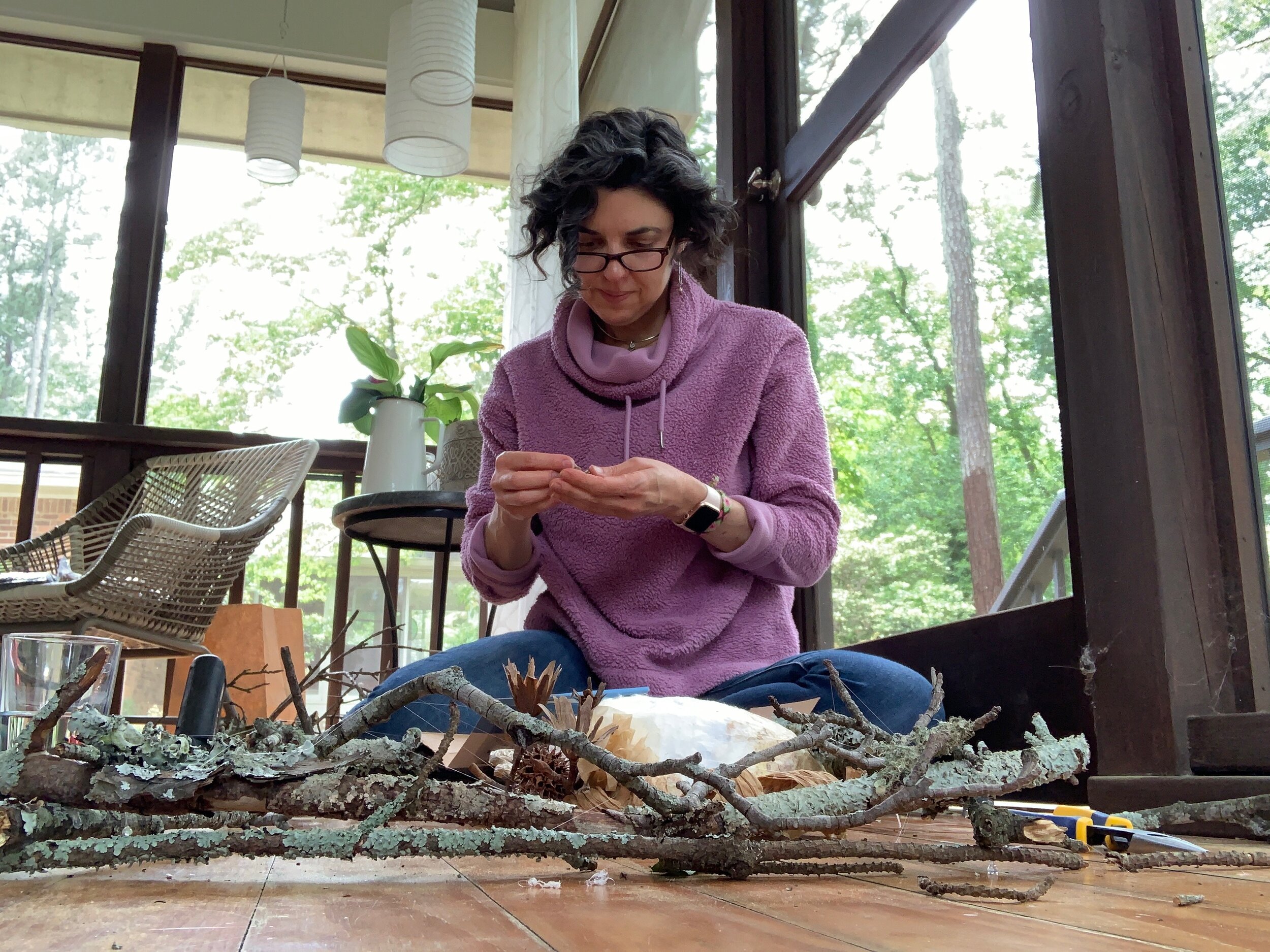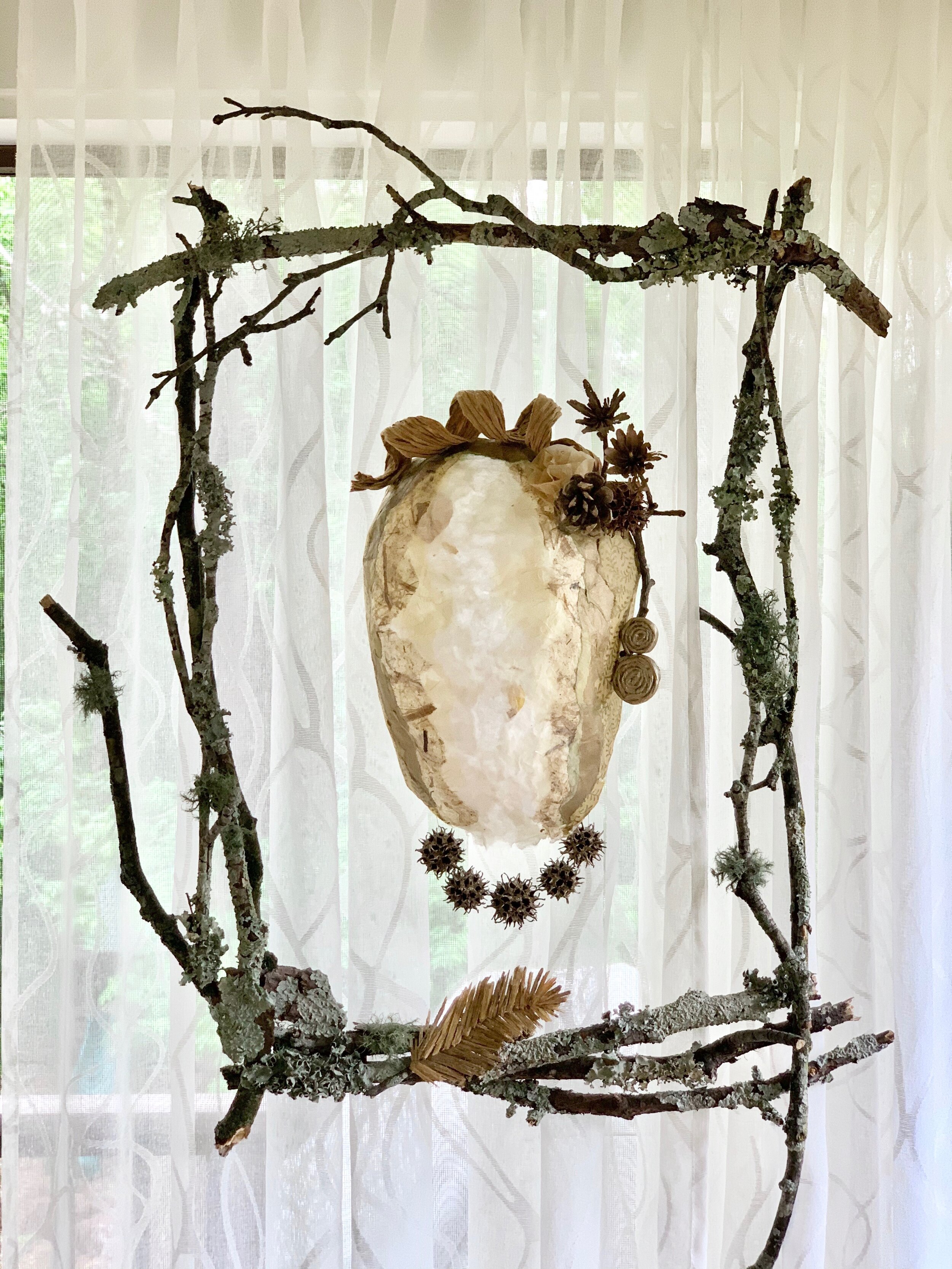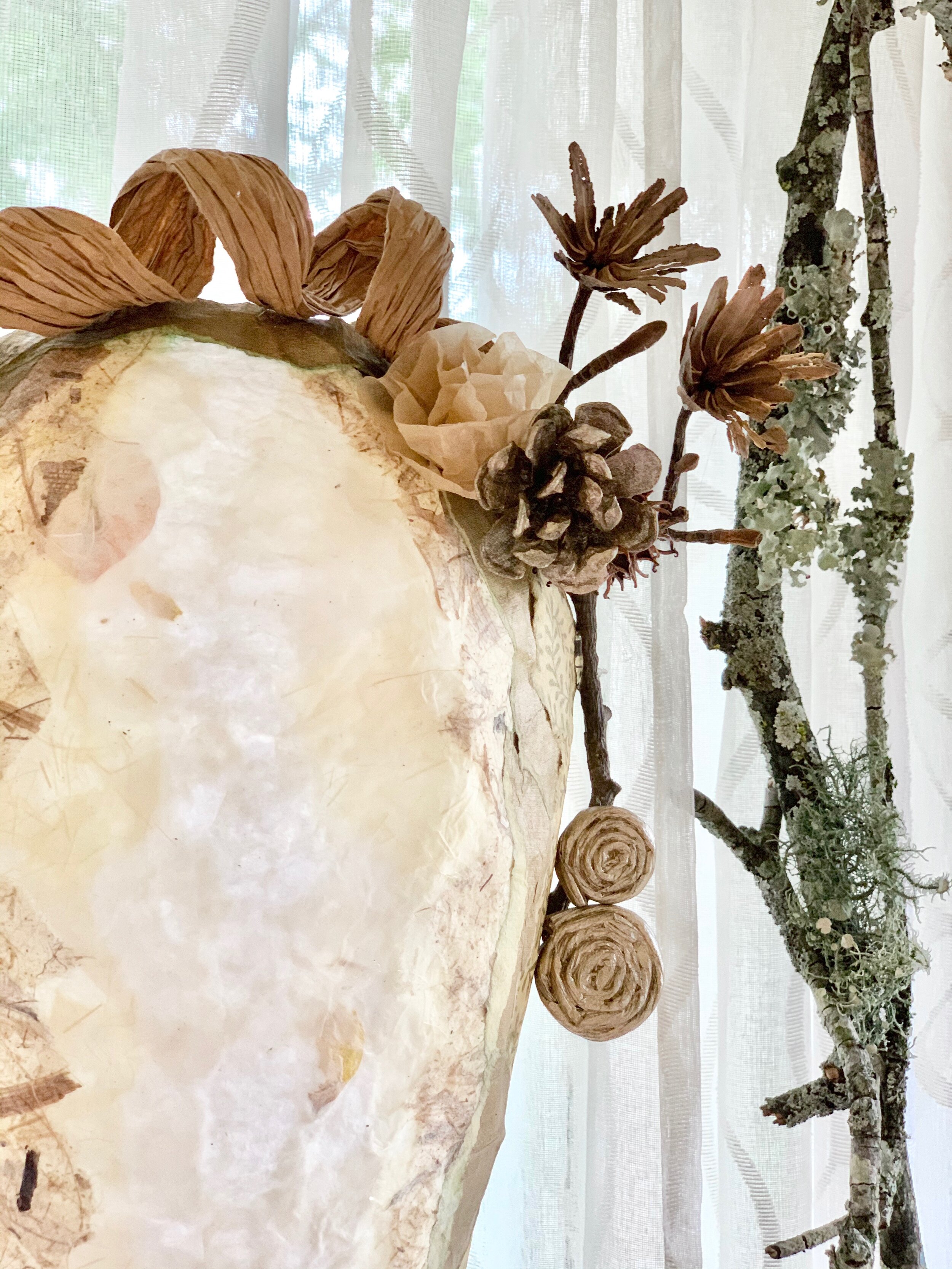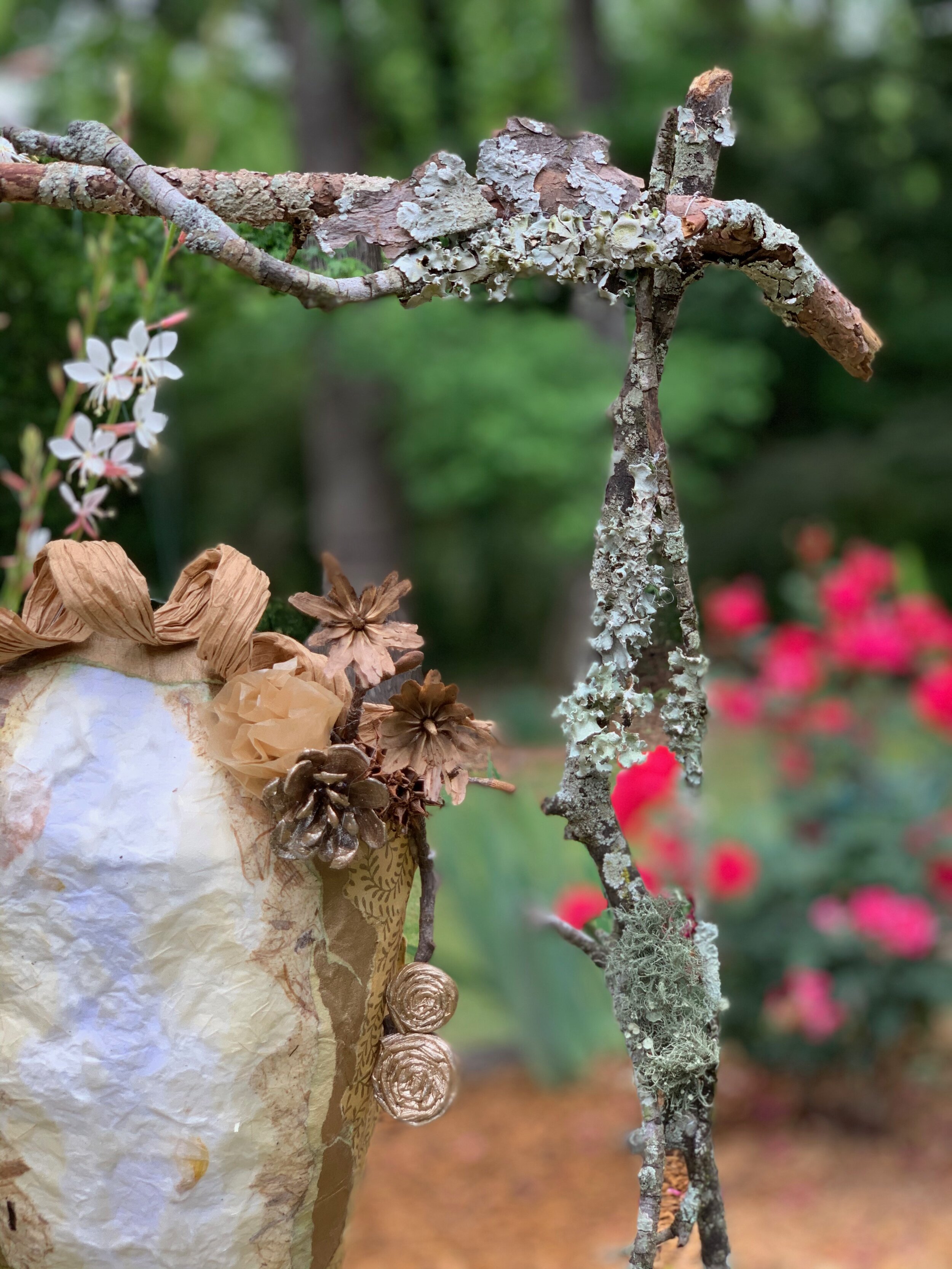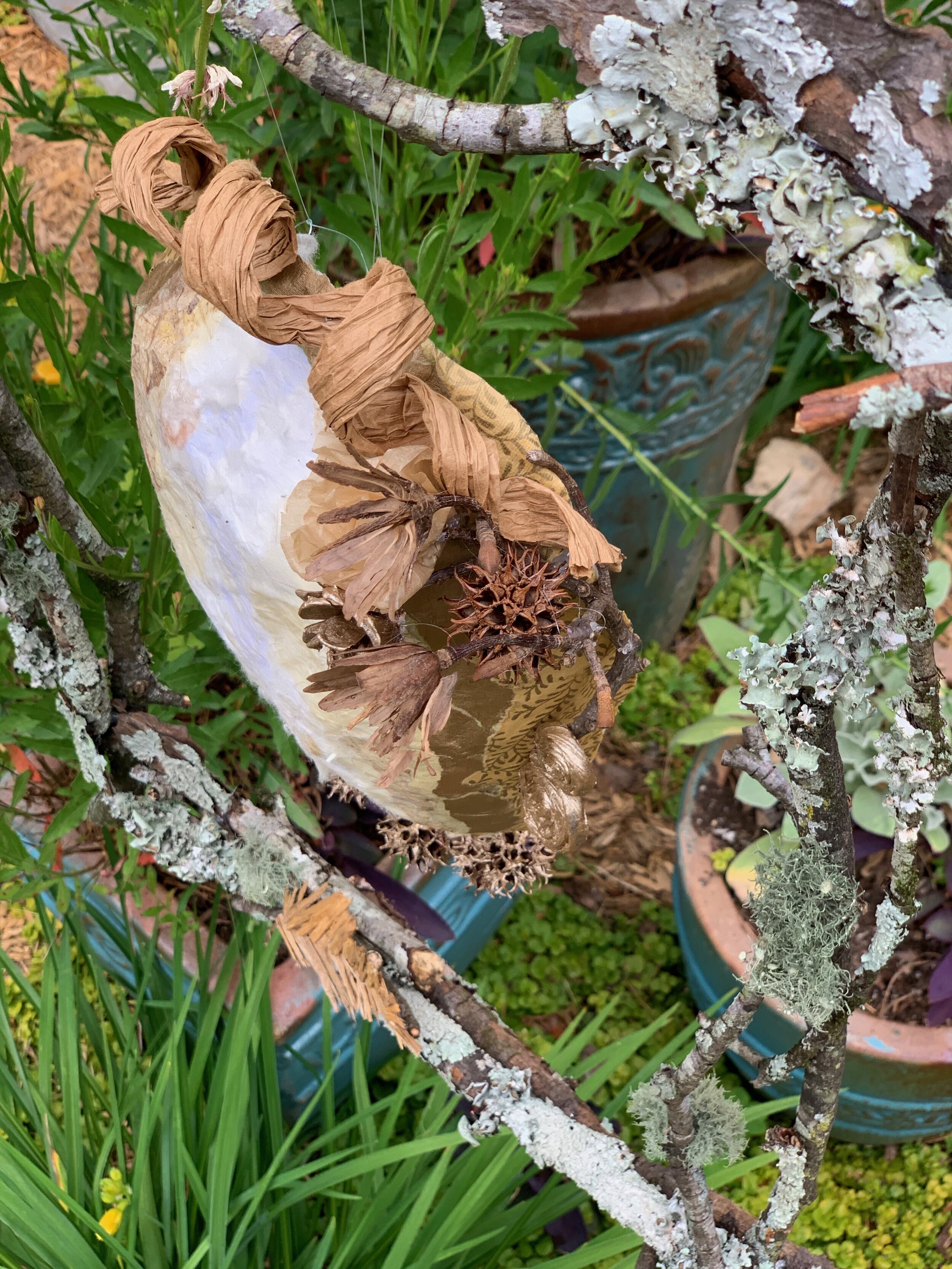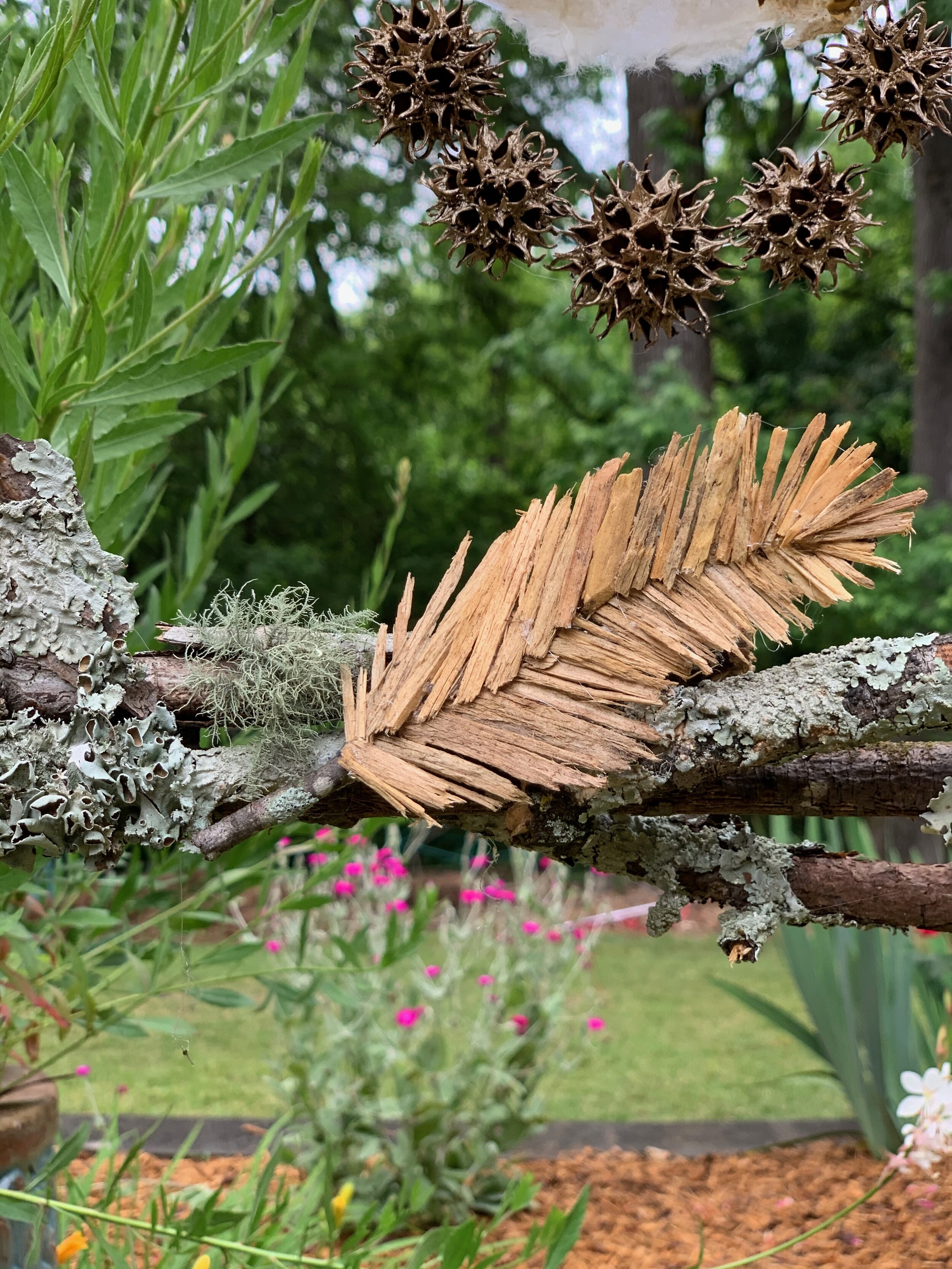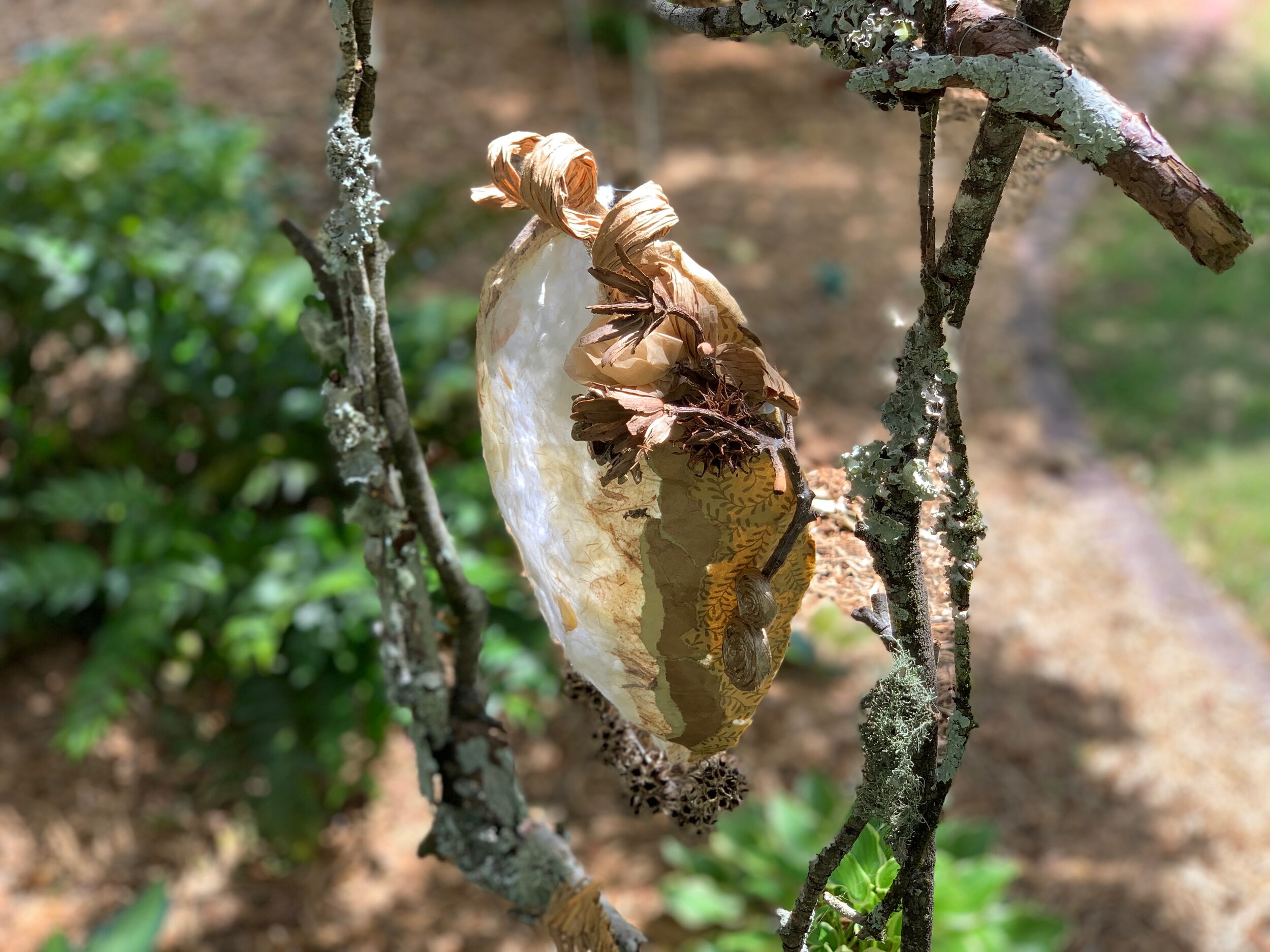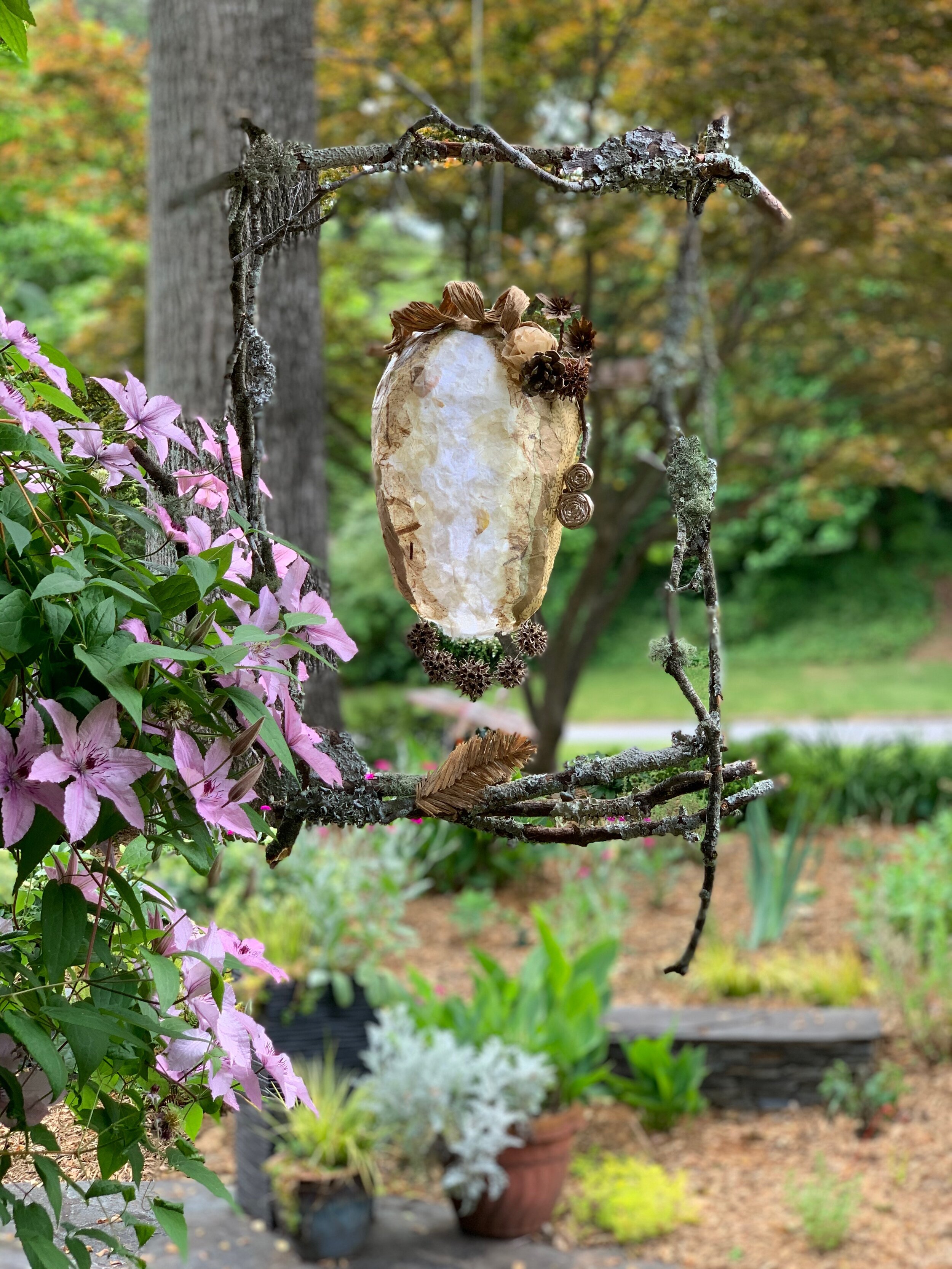Opening up to possibilities
May 15, 2020
Free your spirit!
Mixed media
Last week I started an incredible online expressive arts course given by Roseline de Thelin, an interdisciplinary visual artist based in Ibiza, Spain. This week I participated in the first of many art laboratory experiments for the three-month course.
Free Your Spirit! is the final incarnation of our first lab installation. It began to come to life as an exercise in this initial class. The following days were full of extending the work — thinking, sketching, experimenting, questioning and writing. In fact the final piece is significantly different from the initial class experiment titled Tribal Dragon.
Tribal Dragon, the initial installation from our class exercise.
Free your spirit! — the final installation for the first art laboratory experiment
When we were given the task to continue the initial work, I wasn’t sure where I could take the piece. It seemed unusable, and I felt disconnected to the initial title and descriptive words we were tasked to write during class. Plus it was a sculpture, a modality in which I normally do not work. Uncomfortable, unsure of where to go, what to do, and how to find the right path, I simply started sketching and scribbling reactions plus any ideas that came to mind.
I followed the process that I’ve been following in graphic design for the past 25+ years. When I don’t know what to do I simply run in all directions, write down all associations, any sparks, any thoughts, descriptions, ideas and sketches. I let loose, and then I let it all simmer in the back of my mind. Sometimes the ideas come to me in the shower, while cooking, driving, meditating or gardening. In this exercise I tried not to judge, though that was often hard, so I just keep ideating. For days I continued brainstorming and reflecting until I finally stumbled upon a concept that felt right.
The images above document my creation process…
It was exhilarating and freeing to open myself up to any medium — considering movement, video, sound, music, sculpture, 3D — all modalities that are not normally my forms of expression. I love that Roseline invites us to stretch and experiment. Her approach gives me permission (though now I realize I always had it and am now simply allowing it) to create imperfect work, to test, to experiment. I’ve come to learn that there can be huge growth in this process.
In the end, I’m glad that I made myself work in 3D. My first reaction was to turn the idea into a painting. To take it from 3D to 2D where I’m comfortable working. But, since this is a lab, experimenting and pushing is my goal, so I went for it. I worked in 3D. Lots of emotions and bracketing along the way ended in peace and satisfaction with the final work. I loved this whole process, and the fact that a seemingly random exercise ended in a complete expression is fulfilling.
At the beginning of the process some interesting questions came up for me…
What’s the difference between a craft and a piece of art? Since I was working in paper mâché, I wanted to be sure I was making art and not simply crafting. It kind of felt like crafting at times.
What is required to categorize something as an installation vs simply a piece of art? Once I made the mask, I wondered, how is a simple mask an installation? It didn’t feel like one. What needs to happen in order to call it an installation and not just a mask?
After a lot of thinking I came to the conclusion that the difference between a craft and art is that art has a concept. It has meaning that goes beyond the literal object or expression.
And I concluded that the difference between a simple piece of art and an installation is the environment in which it’s set. An installation is set deliberately in a space, in a particular environment, giving it life and meaning beyond the simple object or objects.
The most powerful realization for me during this first lab experiment is that unfinished work and seemingly unrelated items in an installation can be the most interesting and compelling for the viewer. The more an artist leaves open, unanswered and unfinished in a work, the more the viewer is invited to interact with the work and give it a personal story, a meaning or an individual interpretation. The viewer is invited to participate in the creation of the story behind the work. Even more, a piece of this nature can have a stronger impact on the world by inviting others to use their creativity and allowing a wider range of thought, feeling, interaction, and reaction.




